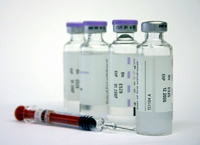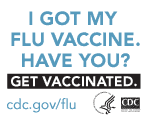What Does Rabies Preexposure Prophylaxis Involve?

Preexposure rabies prophylaxis is administered for several reasons.
First, although preexposure vaccination does not eliminate the need for additional therapy after a rabies exposure, it simplifies management by eliminating the need for RIG and decreasing the number of doses of vaccine needed -- a point of particular importance for persons at high risk for being exposed to rabies in areas where immunizing products might not be available or where lesser quality biologics might be used placing the exposed person at increased risk for adverse events.
Second, pre- exposure prophylaxis might protect persons whose postexposure therapy is delayed. Finally, it might provide protection to persons at risk for unapparent exposures to rabies.
| Risk Category | Nature of Risk | Typical Population | Preexposure Recommendations |
|---|---|---|---|
| Continuous | Virus present continuously, often in high concentrations. Specific exposures likely to go unrecognized. Bite, nonbite, or aerosol exposure. | Rabies research laboratory workers; rabies biologics production workers. | Primary course. Serologic testing every 6 months; booster vaccination if antibody titer is below acceptable level. |
| Frequent | Exposure usually episodic, with source recognized, but exposure also might be unrecognized. Bite, nonbite, or aerosol exposure. | Rabies diagnostic lab workers, spelunkers, veterinarians and staff, and animal-control and wildlife workers in rabies-enzootic areas. All persons who frequently handle bats. | Primary course. Serologic testing every 2 years; booster vaccination if antibody titer is below acceptable level. |
| Infrequent | Exposure nearly always episodic with source recognized. Bite or nonbite exposure. | Veterinarians and terrestrial animal-control workers in areas where rabies is uncommon to rare. Veterinary students. Travelers visiting areas where rabies is enzootic and immediate access to appropriate medical care including biologics is limited. | Primary course. No serologic testing or booster vaccination. |
| Rare (population at large) | Exposure always episodic with source recognized. Bite or nonbite exposure. | U.S. population at large, including persons in rabies-epizootic areas. | No vaccination necessary |
Primary Vaccination
Three 1.0-mL injections of HDCV or PCEC vaccine should be administered intramuscularly (deltoid area) -- one injection per day on days 0, 7, and 21 or 28. Vaccine preparations for intradermal administration are no longer available in the United States.
Booster Doses of Vaccine
Persons who work with rabies virus in research laboratories or vaccine production facilities are at the highest risk for unapparent exposures. Such persons should have a serum sample tested for rabies antibody every six months. Intramuscular booster doses of vaccine should be administered to maintain a serum titer corresponding to at least complete neutralization at a 1:5 serum dilution by the RFFIT.
The frequent-risk category includes other laboratory workers (e.g., those performing rabies diagnostic testing), spelunkers, veterinarians and staff, and animal-control and wildlife officers in areas where animal rabies is enzootic. The frequent-risk category also includes persons who frequently handle bats, regardless of location in the Unites States. Persons in the frequent risk group should have a serum sample tested for rabies antibody every 2 years; if the titer is less than complete neutralization at a 1:5 serum dilution by the RFFIT, the person also should receive a single booster dose of vaccine.
Veterinarians, veterinary students, and terrestrial animal-control and wildlife officers working in areas where rabies is uncommon to rare (infrequent exposure group) and at-risk international travelers do not require routine preexposure booster doses of vaccine after completion of primary preexposure vaccination.
What will I be given for rabies preexposure prophylaxis?
For persons who have never been vaccinated against rabies previously, postexposure anti-rabies vaccination should always include administration of both passive antibody and vaccine. Persons who have been previously vaccinated or are receiving preexposure vaccination for rabies should receive only vaccine. The combination of human rabies immune globulin (HRIG) and vaccine is recommended for both bite and nonbite exposures, regardless of the interval between exposure and initiation of treatment.
| Type | Name | Route | Indications |
|---|---|---|---|
| Human Diploid Cell Vaccine (HDCV) | Imovax® Rabies | Intramuscular | Preexposure or Postexposure |
| Purified Chick Embryo Cell Vaccine (PCEC) | RabAvert® | Intramuscular | Preexposure or Postexposure |
Content Source: National Center for Zoonotic, Vector-Borne, & Enteric Diseases (ZVED)

